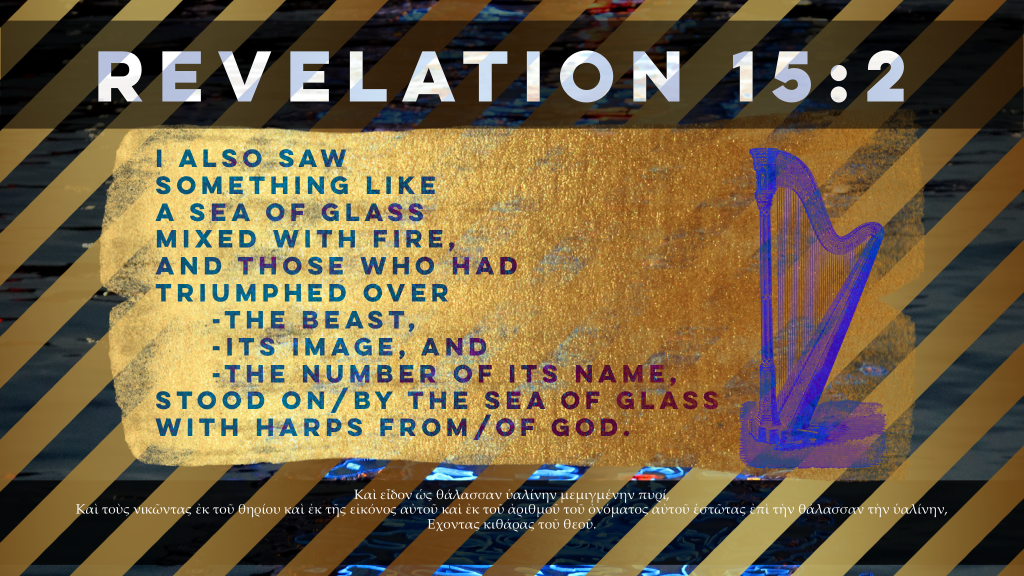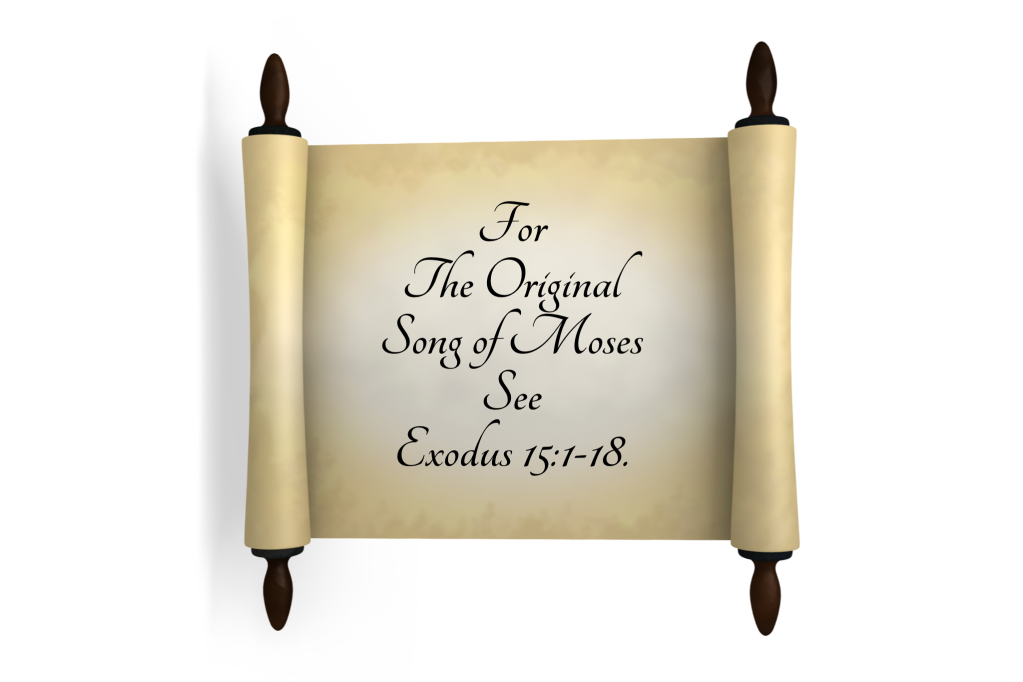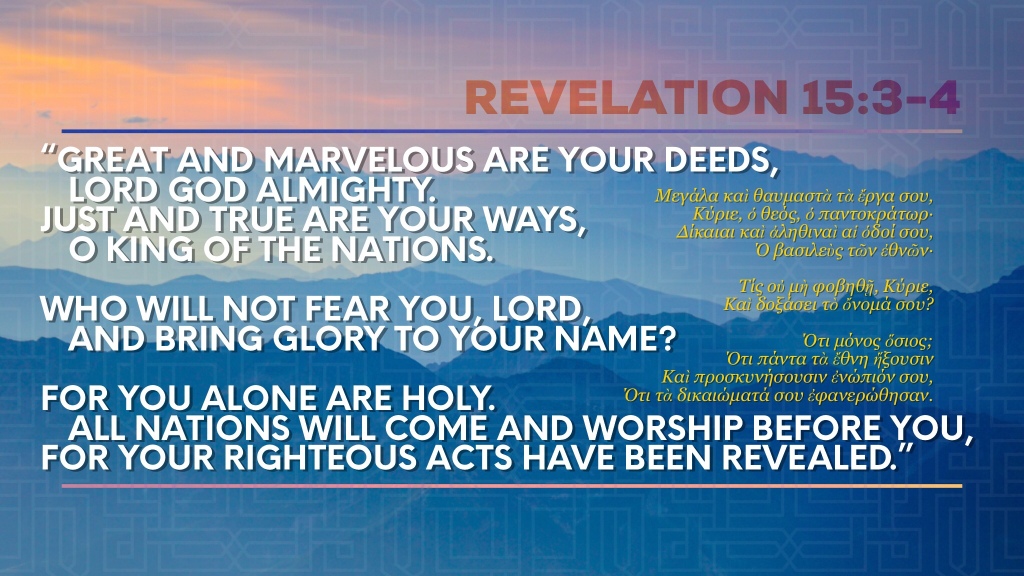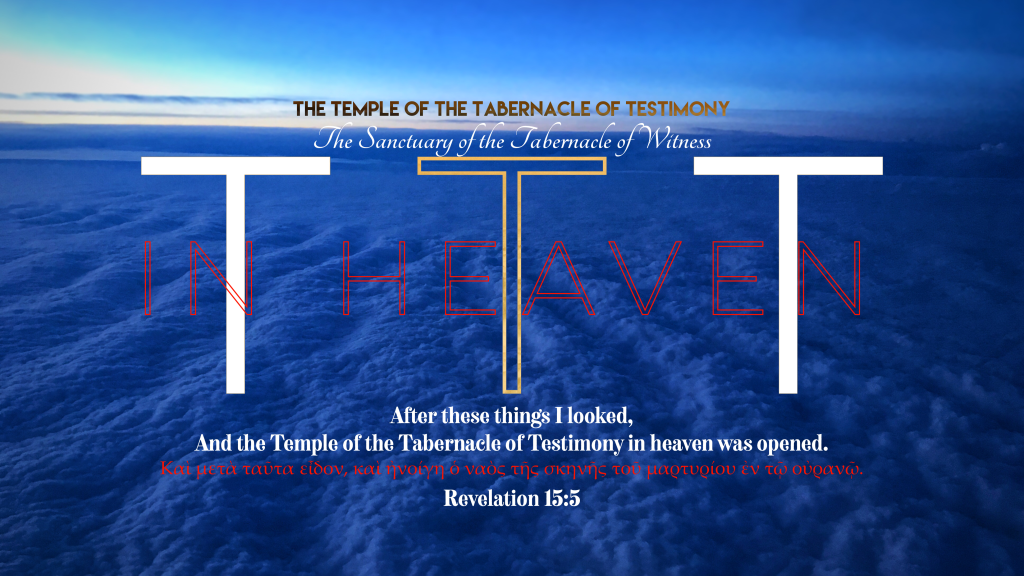
Tuesday, May 25, 2021

To start, I should probably give credit where credit is due. The term Eschatological Exodus does not originate with me, but, as far as I know, with (the now semi-retired) Professor Richard Bauckham from Her Majesty’s United Kingdom of Great Britain and Northern Ireland. Personally, I consider Professor Bauckham to be the most important recent and living interpreter of the Book of Revelation. Professor Bauckham may even eventually rank as the single most insightful and influential interpreter of the Book of Revelation (and similar biblical literature) in the last several centuries. Yes, centuries. I know, I know: That’s quite a big claim to make. Yet it may be both apt and true.
Although it has a rather generic title, way back in the early 1990s a younger Dr. Professor Baukham wrote a refreshingly brief, catchingly brilliant, and now-absolutely-essential scriptural study of Revelation called… drumroll… The Theology of the Book of Revelation, which will be abbreviated from hence as TBR. In TBR, Professor Bauckham identifies three primary symbolic themes that recur throughout the Book of Revelation: 1) The Messianic War, 2) The Eschatological Exodus, and 3) The Witness of Jesus. Nowhere is the second symbolic theme, the Eschatological Exodus, more prominent within the Book of Revelation than Chapter Fifteen. To quote Dr. Bauckham regarding that theme:
In 15:2-4 the Christian Martyrs, victorious in heaven, are seen as the people of the new exodus, standing beside a heavenly Red Sea, through which they have passed, and singing a version of the song of praise to God which Moses and the people of Israel sang after their deliverance from Pharaoh at the Red Sea (Exodus 15).
Richard Bauckham, The Theology of the Book of Revelation, p. 71.
To be something of a fastidious stickler, I will mention here that while Professor Bauckham identifies the triumphant throng as “Christian Martyrs,” Revelation Chapter Fifteen itself does not use either descriptor. Those who have triumphed over the Beast, its Image, and the Number of its Name are called neither Christians nor Martyrs in Chapter Fifteen. Dr. Bauckham is making a slight interpretive move (quite understandably) when he designates the heavenly throng as Christian Martyrs. I will explain why I am taking issue with his subtle interpretive move in a few paragraphs. But as it is, I am getting ahead of myself. We ought to start at the beginning of the chapter with Verse One.

Here in Verse One we are put on notice of utterly terrifying things to come. John, the narrator, sees a sign in Heaven: He sees seven angels with seven final plagues. The Wrath of God is about to be dispensed in seven sequential measures upon the Earth. Hitherto in the Book of Revelation the Wrath of God has not been dispensed on the Earth.
For those who harbor doubts as to whether the Wrath of God has been withheld prior to this point in the Book of Revelation, a quick word study of Wrath and God will yield the following seven references in the Book of Revelation: 14:10; 14:19; 15:1; 15:7; 16:1; 16: 19; and 19:15. I interpret the two references to the Wrath of God in Chapter Fourteen as synchronous with (happening at the same time as) the terrifying events that come with the outpouring of the Bowls of Wrath in Revelation Chapter Sixteen. I would encourage the especially studious to read through those seven wrathful references; and will boldly suggest that if they do so, they will most likely come to the same conclusion: The Wrath of God only begins when the Bowls are poured out, one by one.
Verse One, therefore, lets the reader know that the outpouring of the Wrath of God is about to commence upon the Earth. But nonetheless, our vantage point is still up in Heaven. We are witnesses to what is happening in Heaven Above immediately before all Hell breaks out on Earth Below. Remind me then: What is happening in Heaven? Verse Two gives us the scene and tells the tale.

A celebration is happening. A concert is happening in Heaven Above. There is singing and rejoicing. It is a time of Triumph, an occasion of celebration.
Does that not strike you as somewhat strange? I mean, although all Hell is about to be unleashed on Earth, the seaside throng in Heaven is celebrating some sort of victory. Why is that? What is going on? Who are these triumphant harpists in Heaven?
We are told that the celebrants in Heaven are those who have triumphed over the Beast, its Image, and the Number of its Name. From henceforth I will refer to that nefarious trio as the Notorious B.I.N.N.
Bauckham says that these triumphant celebrants are Christian Martyrs. He is only kind of right about that. The problem is that you might misunderstand what he means with those two words. Christians are not necessarily those who loosely self-identify as such, but those who are really redeemed, the truly faithful, the steadfast Saints throughout the centuries and millenia. And the Martyrs are not necessarily those who have died for their faith, but include all those who have kept the faith and maintained their witness for Christ Jesus. That is because the word martyr originally just meant a witness. In contradiction to the very esteemed Professor Baukham, then, I want to suggest that in Chapter Fifteen we are seeing an even bigger crowd. The throng of triumphant celebrants in Heaven includes not just Christian Martyrs in a narrow sense, but all the Saints through the centuries, right up until the Second Coming or Advent of Jesus Christ. I do mean all of them, every single one, including you and me, hopefully.

To identify the size and compostion of the throng, the Notorious B.I.N.N. serve as perhaps the most important clue. One reason why the Notorious B.I.N.N. are mentioned here is because they will appear in their ultimate and worst incarnations right at the very end of this current common era.
For the sake of clarity, I need to explain what I mean by “the end of this current common era.” When I was a child, the historical timeline was usually divided according to the abbreviations of B.C. and A.D. But for better or worse, that chronological division has since changed. Now the abbreviations B.C.E. and C.E. are used more commonly to divide the timeline. And what do those abbreviations stand for? B.C. once abbreviated “Before Christ”; and A.D. once abbreviated Anno Domini, which translates from Latin to “in the year of the Lord.” To avoid the implicit Christian chronological assumptions of B.C. and A.D., sensitive souls in Academia made a switch to B.C.E. and C.E. over the last 35 years or so. As you may know, B.C.E. abbreviates Before the Common Era, while C.E. abbreviates the Common Era. So now, with this timeline revisionism explained, I will hereby assert and solemnly affirm that according to Revelation Chapter Fifteen this Common Era will come to an abrupt end with the return of Christ, the return of Christ for the Church. When Christ comes back for the Church this current Common Era will end ubruptly. Perhaps, then, the loss of the B.C. and A.D. abbreviations was not actually a loss, theologically speaking. One might argue that Anno Domini, the year of our Lord, actually begins when Christ returns for the Church.
So then, Revelation Chapter Fifteen shows us the scene in Heaven Above immediately after the current Common Era ends. In Chapter Fifteen, Christ has come. The Church has been lifted from Earth and has arrived triumphantly in Heaven. The throng beside the Sea of Glass is celebrating their escape from and Triumph over the Notorious B.I.N.N. and all their persecutors on Earth Below. Just as the Children of Israel were miraculously delivered from their Egyptian enemies through the Red Sea, so all the Saints of God will someday be miraculously delivered from their enemies through Resurrection and Rapture, when Christ himself returns to claim his Church.
And so, moving along to Verse Three, the Trimphant Celebrants are said to sing a particular song of deliverance – the Song of Moses, the Servant of God, and the Song of the Lamb.

If you were to cross-reference Revelation’s Deliverance Song with the original Song of Moses in the Book of Exodus Chapter 15, you might be struck by the comparative similarities and the differences. While both songs celebrate the amazing saving deeds of God, the Original Exodus Song is almost entirely ethnocentric and expresses hostility towards neighboring nations, whereas Revelation’s Exodus Song refers to God as the King of the Nations, and affirms that all the nations will ultimately come and worship God. Given its Anno Domini timing and its heavenly setting, this affirmation is intriguing, because it might allow some measure of hope for eventual salvation, even for those who have been left behind, the inhabitants of the Earth who are about to endure the Wrath of God.

And yes, with the phrase “left behind” I am affirming the reality of the Rapture here. The Eschatological Exodus is the Rapture. They are one and the same event. Revelation Chapter Fifteen show us the scene in Heaven Above immediately after all the Saints, and the entire Church, leave Earth Below. To be honest and fair to Professor Bauckham, I think he would not concur with me here. In TBR and his other books, Dr. Bauckham does not equate the Eschatological Exodus with the Rapture. He just says that those who are beside the Sea of Glass in Heaven are Christian Martyrs (as opposed to all the redeemed Saints and the entire Church throughout history). My question for him and for those who follow him would be how Chapter Fifteen fits in its wider narrative context. As I see it, the reason for our disagreement is because he does not see a sequential, chronological progression from the Series of Seven Trumpets (Revelation 8:6-11:19) to the Series Seven Bowls of Wrath (Revelation 15:1-16:21). I do. I see a clear sequential and chronological progression. There is an important topical excursus between the two series (from Revelation 12:1 through 14:20); but otherwise they follow each other sequentially and chronologically.
Interpretive decisions about how to divide and how to connect the flow of the narrative and the various scenes within Revelation are necessary and inescapable. Whether an interpreter sees a sequential, chronological progression from the Series of Seven Trumpets to the Series of Seven Bowls of Wrath will determine whether Revelation allows for and depicts a Rapture or not, in my estimation.

Plus, I believe that what Paul teaches in 1 Thessalonians 4:17 absolutely requires the Rapture be taken literally and seriously. It is simply what immediately follows the general resurrection of the redeemed. We ascend to meet Christ in the air. We ascend to Heaven, just as Christ himself was resurrected and ascended. We follow the same pattern set by Christ. And Revelation Chapter Fifteen gives us a brief glimpse of their/our celebration upon our arrival in glory.
But back to the passage at hand. In Verses Three and Four, we read the lyrics of the New Exodus Song. The Triumphant Celebrants in Heaven give praise to God for His marvelous deeds, question the folly of not fearing and glorifying the Lord, and affirm both God’s Holiness and the inevitability of His universal acclamation. All of this is of course fitting for what Christ accomplished through his life, death, resurrection, and ascension. It would be all the more fitting for what Christ accomplishes if and when he delivers us, the Church, from the final persecution of the Notorious B.I.N.N.

Now we move on the Verse Five. I cannot recall ever hearing someone teach or preach from the pulpit about this particular verse. John the Narrator sees the Temple of the Tabernacle of Testimony in Heaven opened. The Temple of the Tabernacle of Testimony has a nice alliterative ring, with its triple Ts, an alternative translation being the Sanctuary of the Tabernacle of Witness. Significantly, the Church is often called a Temple or a Sanctuary in the New Testament. And I do suggest that the Temple of the Tabernacle of Testimony in Heaven is the Resurrected Church while it resides in Heaven. Here John the Narrator sees the Raptured Church as a Temple or Sanctuary. He witnesses its inaugural opening in Heaven. Based on Old Testament passages regarding the inaugural opening of the Tabernacle and the Temple (see Leviticus 9:22-24; 1 Kings 8:11; and 2 Chronicles 7:1-3), we ought to anticipate something awesome is about to occur. And so something does.

At the Sanctuary Church’s inaugural opening in Heaven, seven angels resembling priests emerge, dressed in their Sabbath finest. They have business to attend to.

The angel-priests are dressed immaculately in clean linen and golden sashes. You might even say that the seven angel-priests are dressed to kill. One of Heaven’s Four Living Creatures gives each of the seven angels a bowl, each full of the Wrath of God. The angels are about to visit Earth, where they will execute divine vengence on the Notorious B.I.N.N. and the pitiful Inhabitants of the Earth.

And though the Sanctuary Church in Heaven is open for the seven exiting angels, the Glory of God makes it entirely impossible for the anyone to enter from the outside (again, this refers back to Leviticus 9:22-24; 1 Kings 8:11; and 2 Chronicles 7:1-3) until after the Seven Bowls of Wrath are dispensed, each in turn. The Sanctuary Church in Heaven is thus temporarily closed to any incoming traffic. Any repentant Inhabitants on Earth must wait until the Wrath of God is entirely spent.

To me, the scenario presented in Chapter Fifteen only makes coherent sense narratively and historically if the Rapture occurs. With the Church off the scene, the Current Common Era comes to a close. Then the truly scary stuff commences.
Praise God for the Rapture….praying for those around for the really scary stuff….
LikeLiked by 1 person
Yes and yes, we should.
LikeLike